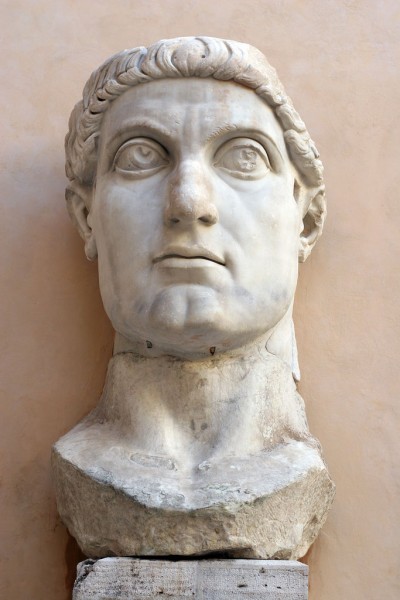 Constantine the Great, c. 315, marble, 8½ feet tall, Palazzo dei Conservatori, Musei Capitolini, Rome, Photo by Camille King via Flickr, Creative Commons Attribution-ShareAlike 2.0 Generic License.
Constantine the Great, c. 315, marble, 8½ feet tall, Palazzo dei Conservatori, Musei Capitolini, Rome, Photo by Camille King via Flickr, Creative Commons Attribution-ShareAlike 2.0 Generic License.
Not long after the Roman Emperor Constantine defeated his foe Maxentius at the Battle of the Milvian Bridge, wresting control of the Roman Empire, he left Italy in 324 CE to found Constantinople, which is present-day Istanbul.
This is not to say Constantine forgot about Rome, or that he would let Rome forget about him. He was sure to leave a surrogate – an enormous sculpture of himself – in the huge Basilica of Maxentius and Constantine in the Roman Forum.
One of the few remnants of the colossal sculpture is the marble head, which stands 8½ feet tall. The extremities were also carved in marble and the body was created from a wood frame with a brick core, probably once covered with bronze.
The mask-like expression, with exaggerated eyes and an unblinking stare is typical of the Late Antique style that was favored during Constantine’s reign, likely because it communicates an eternal authority.


